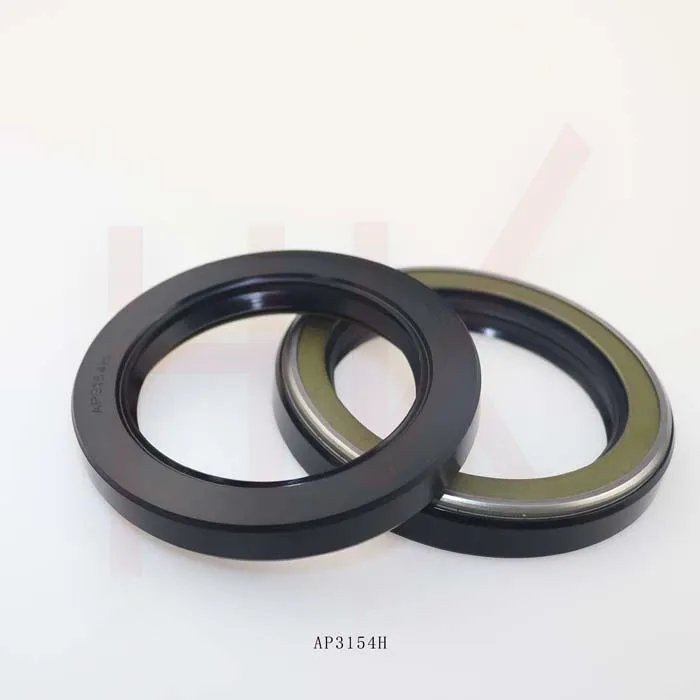Dec . 11, 2024 11:03 Back to list
Rubber Hub Seals for Enhanced Protection and Performance in Automotive Applications
Understanding Rubber Hub Seals Essential Components for Automotive and Industrial Applications
Rubber hub seals are critical components used in various mechanical systems, especially in automotive and industrial applications. These seals play a vital role in ensuring that different mechanical parts function efficiently by preventing the leakage of fluids, debris, and contaminants. This article delves into the importance, functionality, types, and maintenance of rubber hub seals.
Importance of Rubber Hub Seals
In vehicles and machinery, rubber hub seals are primarily employed in hubs where the axles meet the wheels. They serve several crucial functions, including
1. Fluid Containment Hub seals help keep lubricants like oil and grease inside the hub, reducing friction between moving parts. This is essential in maintaining the performance and longevity of bearings and other components.
2. Contaminant Exclusion These seals act as barriers against dirt, dust, water, and other external contaminants that could potentially harm the internal components. This exclusion is vital for the integrity of bearing systems, where even minute contaminants can lead to premature wear and damage.
3. Improved Safety By preventing leaks of brake fluid or differential oil, rubber hub seals contribute to the overall safety of the vehicle. A compromised seal could lead to brake failure or drivetrain issues, posing serious risks to drivers and passengers.
Functionality of Rubber Hub Seals
Rubber hub seals are designed to fit snugly around rotating shafts. Their design typically features a flexible rubber lip that makes contact with the shaft, creating a seal. This elastic behavior allows the seal to adapt to variations in temperature and pressure while maintaining its sealing capability.
The rubber material itself is engineered to withstand a range of environmental conditions, including temperature fluctuations, exposure to chemicals, and abrasion. This durability is crucial for maintaining performance over an extended period. The seal design can also include features like spring-loaded lips, which provide additional pressure against the shaft for improved sealing performance.
Types of Rubber Hub Seals
There are various types of rubber hub seals tailored to meet specific application requirements
rubber hub seal

1. Single-lip Seals These seals have one lip and are commonly used in low-pressure applications where contaminants are less likely to infiltrate.
2. Double-lip Seals Featuring two lips, these seals provide enhanced protection against contaminants and are widely used in environments exposed to dirt and moisture.
3. Spring-loaded Seals These seals incorporate a spring mechanism that ensures consistent contact with the shaft, allowing for improved sealing under conditions of vibration and movement.
4. Customized Seals Many manufacturers offer seals tailored to specific applications featuring unique dimensions, materials, and designs, ensuring optimal performance in various conditions.
Maintenance of Rubber Hub Seals
To ensure the longevity and effectiveness of rubber hub seals, regular maintenance is essential. Here are some recommendations
- Regular Inspections Conduct routine checks for signs of wear, cracks, or damage to seals.
- Replace When Necessary If leaks or contamination are detected, replacing the seals promptly can prevent further damage to surrounding components.
- Use Appropriate Lubricants When installing or maintaining seals, utilizing the right lubricants can significantly extend their life by reducing friction and wear.
- Environment Considerations Be mindful of the operating environment, as extreme conditions can affect seal performance. Choose seals designed for specific applications to enhance durability.
In conclusion, rubber hub seals are essential components in various mechanical systems, particularly in automotive applications. Understanding their importance, functionality, types, and maintenance strategies can help ensure the reliability and safety of vehicles and machinery. As technology advances, the design and materials used in hub seals continue to evolve, promising better performance and durability in the future.
-
TCN Oil Seal Metal Ring Reinforcement for Heavy Machinery
NewsJul.25,2025
-
Rotary Lip Seal Spring-Loaded Design for High-Speed Applications
NewsJul.25,2025
-
Hydraulic Cylinder Seals Polyurethane Material for High-Impact Jobs
NewsJul.25,2025
-
High Pressure Oil Seal Polyurethane Coating Wear Resistance
NewsJul.25,2025
-
Dust Proof Seal Double Lip Design for Construction Equipment
NewsJul.25,2025
-
Hub Seal Polyurethane Wear Resistance in Agricultural Vehicles
NewsJul.25,2025
-
The Trans-formative Journey of Wheel Hub Oil Seals
NewsJun.06,2025
Products categories
















